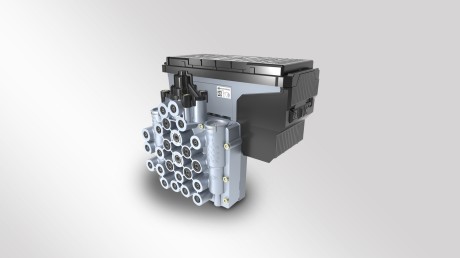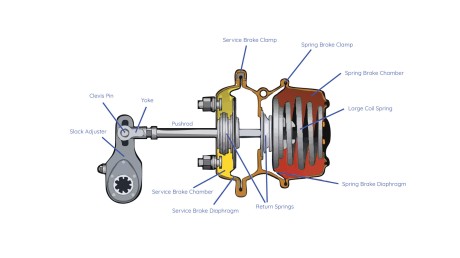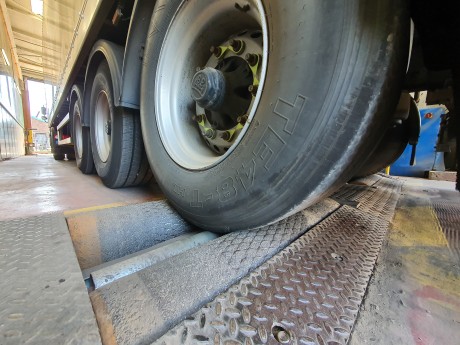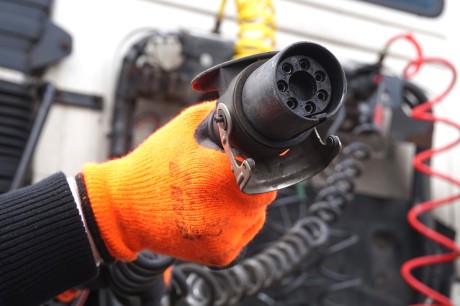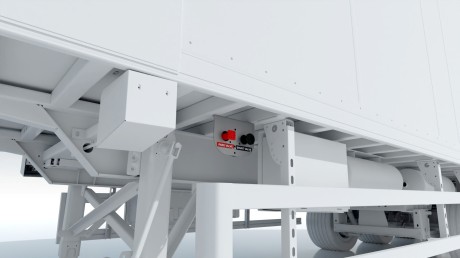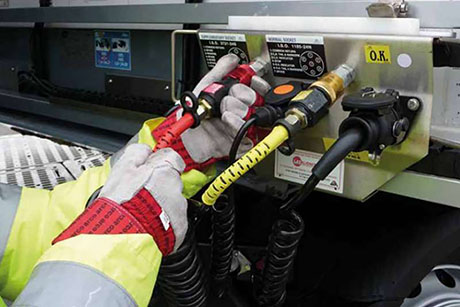
What is HGV Trailer Rollaway And Why Does It Happen?
Trailer rollaway incidents are a serious safety hazard, potentially leading to severe injuries, fatalities, and property damage. Many drivers assume that trailer brakes will always hold a trailer stationary, but this is not always the case. Understanding the causes of trailer rollaway and how to prevent it is essential for all HGV drivers.
Contents
- Why Do Trailer Rollaways Happen?
- Coupling Without the Trailer Park Brake Applied
- Split Coupling Without the Trailer Park Brake Applied
- Residual Air Pressure Loss in an Uncoupled Trailer
- Releasing the Trailer Brakes Without the Tractor Park Brake Applied
- Safe Coupling and Uncoupling Procedures
- Solutions to Prevent Trailer Rollaway
- Final Safety Considerations
- Conclusion
- Gallery
Why Do Trailer Rollaways Happen?
Rollaway incidents typically occur when brakes unexpectedly release due to air pressure changes, incorrect assumptions about braking systems, or failure to apply the trailer park brake. The four most common causes of trailer rollaway are:
1. Coupling Without the Trailer Park Brake Applied
This is the most common cause of trailer rollaway and occurs when a trailer has been left by a previous driver without the trailer park brake applied. In this situation, the trailer is in an emergency state with either the service brakes or spring brakes applied (depending on the trailer’s braking technology).
What Happens?
- The new driver begins coupling the trailer and performs a pull-test, confirming that the brakes are applied.
- Assuming the brakes are holding the trailer, the driver may leave the tractor park brake off.
- The driver then exits the cab and gets onto the catwalk in the space between the tractor and trailer to complete coupling.
- As soon as the red airline is connected, the trailer's pneumatic system repressurises and exits the emergency state.
- As the trailer park brake was not applied, the brakes release entirely, and the combination is now free to roll.
Why is this dangerous?
- At the moment the brakes release, the driver is in an extremely vulnerable position and is at risk of life threatening fall or crush incidents.
Safety Rule: Always apply the trailer park brake before connecting the red airline.
2. Split Coupling Without the Trailer Park Brake Applied
Split coupling occurs when a driver reverses the tractor unit under the trailer without fully engaging the fifth wheel kingpin, leaving extra space for connecting air and electrical lines. This practice significantly increases the risk of rollaway if the trailer park brake has not been applied.
Why is this dangerous?
- The trailer is not mechanically secured to the tractor, so even if the tractor park brake is engaged, it is not holding the trailer in place.
- When the red airline is connected, the trailer exits the emergency state and its brakes release.
- Some drivers assume that the tractor park brake will apply the trailer service brakes, but this is not always the case. Not all tractor units send a brake signal to the trailer when the tractor park brake is engaged.
Safety Rule: Always fully couple the fifth wheel before connecting air and electrical lines.
3. Residual Air Pressure Loss in an Uncoupled Trailer
When a trailer is uncoupled without the trailer park brake applied, it is in an emergency state and, in some EBS-equipped trailers, may be held in place by the service brakes. However, over time, the residual air pressure in an uncoupled trailer depletes, reducing braking effectiveness.
Why is this dangerous?
- As air pressure drops below 4.5 BAR, the service brakes begin to weaken.
- There is a grey area between 3 and 4.5 BAR where neither the service brakes nor the spring brakes are fully effective.
- Below 3 BAR, the spring brakes should effectively hold the trailer securely in place.
- This means a trailer parked and left unattended in a yard can begin rolling unexpectedly if the pressure is within the grey area where braking is compromised.
Safety Rule: Always ensure the trailer park brake is applied when leaving a trailer unattended.
4. Releasing the Trailer Brakes Without the Tractor Park Brake Applied
Even when the trailer park brake has been correctly applied and the spring brakes are active, the driver must release the trailer brakes at some point after coupling everything correctly. If the tractor park brake has not been applied and the driver releases the trailer park brake, the entire combination is now free to move.
Why is this dangerous?
- The driver is now in an extremely vulnerable position by the side of the trailer with an increased risk of a life-threatening crush incident.
Safety Rule: Always ensure the tractor park brake is applied before releasing the trailer park brake.
Safe Coupling and Uncoupling Procedures
For detailed instructions on safe coupling and uncoupling procedures, refer to the official guides.
Solutions to Prevent Trailer Rollaway
Various products are available to help mitigate the risk of trailer rollaway by ensuring the trailer park brake is applied in critical situations:
- Pownall Valve, TEM and TrCM, (Park Safe) Valves – These systems use residual air pressure when the red airline is disconnected to automatically force out the trailer park valve, ensuring the trailer park spring brake is applied. These solutions effectively address risks 1 to 3.
- Maple SafeConnect Valve – This system addresses all four risks by preventing the normal effect of the red airline when reconnected. When the red airline is connected, the trailer does not automatically release its brakes. Even when the trailer park brake is manually released, the SafeConnect valve keeps the trailer brakes active. It only releases red airline pressure when it detects service brake cycling, ensuring the driver is safely back inside the cab.
Final Safety Considerations
- Never rely on air pressure alone to hold a trailer stationary.
- Always engage the trailer park brake when uncoupling or coupling.
- Avoid split coupling where possible, as it increases the risk of unintended movement.
- Follow the correct coupling sequence to prevent rollaway accidents.
- Never connect the red airline first—always apply the trailer park brake before doing so.
- Always ensure the tractor park brake is applied before releasing the trailer park brake.
Conclusion
Trailer rollaway incidents are entirely preventable. By understanding the risks, following correct procedures, and remaining vigilant, drivers can eliminate rollaway hazards and ensure safer operations for themselves and others.
Stay Safe – Always Apply the Trailer Park Brake!
Main picture courtesy of Maple Fleet Services
We’d love to hear from you – get in touch today!

